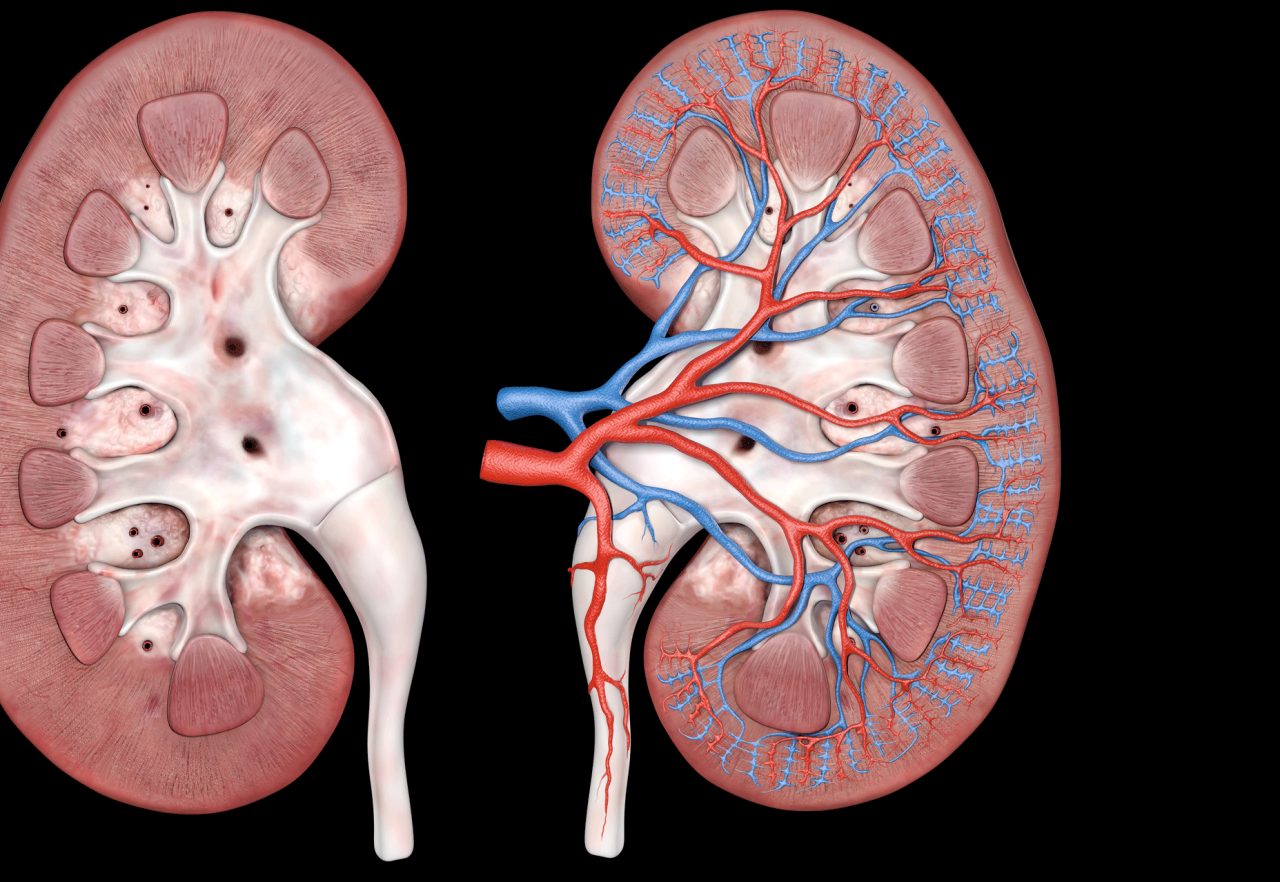What Is Diabetic Nephropathy?

Damage to your kidneys from high blood sugar could lead to a common diabetes complication called diabetic nephropathy. Here's what you should know.
About 40 percent of people with type 1 and type 2 diabetes eventually develop diabetic nephropathy — often within the first 10 to 20 years after their diagnosis. Nephropathy, also called diabetic kidney disease, is damage to the blood vessels in your kidneys from high blood sugar.
If the damage isn’t stopped, it can eventually lead to kidney failure. At that stage, you’ll need dialysis or a kidney transplant to take over the work of your kidneys.
Keeping your blood sugar and blood pressure under control will help to protect these two important organs and prevent you from reaching late-stage kidney disease.
YOU MIGHT ALSO LIKE: Treating High Blood Sugar Symptoms
What causes diabetic nephropathy?
Your kidneys are lined with blood vessels that filter waste and fluid from your blood to make urine. Over a period of years, high blood sugar from type 1 or type 2 diabetes damages the vessels, preventing them from doing their job.
Because your kidneys also control blood pressure, any harm to them can lead to high blood pressure. High blood pressure inflicts even more damage on your kidneys’ blood vessels, which makes diabetic nephropathy worse.
You’re more likely to get diabetic nephropathy if you have diabetes along with:
- High blood sugar and high blood pressure that isn’t under good control
- A smoking habit
- High cholesterol
- Obesity
- Other family members with diabetes and kidney disease
How do you know you have diabetic kidney disease?
You may not know you’ve developed diabetic nephropathy. Often the disease doesn’t cause any signs or symptoms. Your doctor should test your urine for high levels of albumin (a sign that your kidneys’ filters are leaking) and order blood tests to assess your overall kidney function.
You’ll have those tests at least once a year if you have type 2 diabetes or if you’ve had type 1 diabetes for more than five years.
Once diabetic kidney disease progresses and the damage gets worse, it could cause signs and symptoms such as:
- Appetite loss
- Confusion
- Muscle cramps in the legs
- Nausea and vomiting
- Pale skin
- Shortness of breath
- Swelling in your eyes, hands, ankles, and feet
- Urinating more often than usual
- Weakness
Let your doctor know if you have any of those symptoms.
Treatment for diabetic neuropathy
Managing diabetic nephropathy starts with controlling blood sugar. Do regular checks of your blood sugar and have your hemoglobin A1C level (which measures your average blood sugar level over the past two to three months) tested as often as your doctor recommends.
If your blood sugar is high, follow your doctor’s advice for bringing it back into a healthy range. Lowering blood sugar usually involves a combination of dietary changes, exercise, and medicine.
You also might need medicine for high blood pressure. Two medications both lower blood pressure and slow kidney damage:
- Angiotensin-converting enzyme (ACE) inhibitors
- Angiotensin II receptor blockers (ARBs)
Diabetic kidney damage often gets worse over time. Having kidney failure means that your kidneys are working at less than 15 percent of their normal function. Because there are good treatments for diabetes and kidney disease, most people with the condition will never reach the kidney failure stage.
Sticking with your treatment plan and following a healthy lifestyle can slow diabetic nephropathy and preserve your kidney function, so you won’t have to worry about dialysis or a transplant in your future.
What you can do
How well you control diabetes and take care of your overall health could determine whether you develop diabetic nephropathy. Here are a few ways to protect your kidneys:
- Follow your diabetes treatment plan. Take your medicines exactly the way your doctor prescribed them.
- Eat a well-balanced diet high in non-starchy vegetables, whole grains, fruits, and lean protein sources (such as chicken breasts, fish, tofu, and beans).
- Get help to quit smoking. Tobacco smoke damages the blood vessels inside your kidneys.
- Avoid or drastically limit the amount of salt in your diet. Too much sodium boosts blood pressure.
- Work toward losing weight if your doctor has told you that your body mass index is in an unhealthy range. Obesity increases your risk for both nephropathy and other types of kidney damage.
- Try to fit in 30 minutes of aerobic exercise (such as walking or bike riding) on most days of the week.
Updated:
December 19, 2023
Reviewed By:
Janet O'Dell, RN